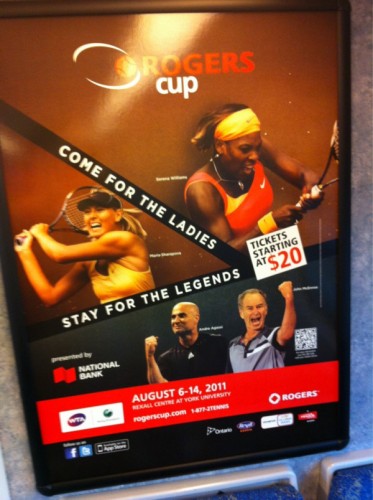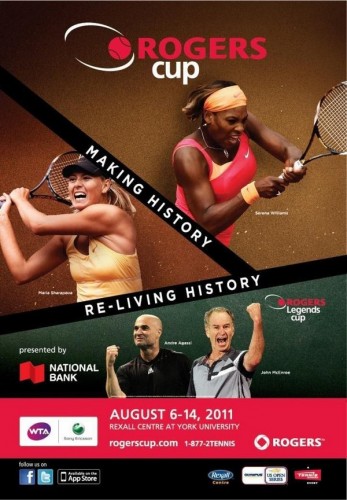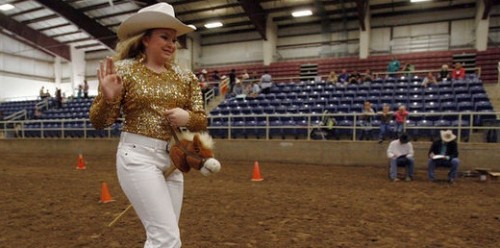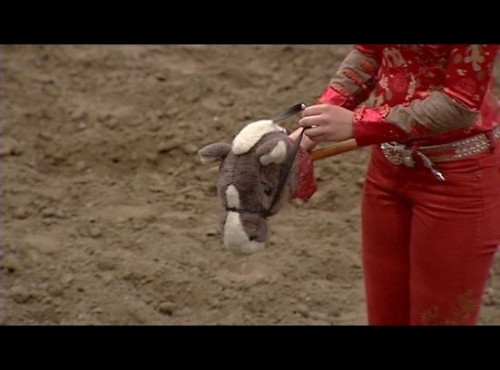Lindsay C., Christie W., and Dolores R. sent in an ad for the Rogers Cup as well as the Rogers Legends Cup (a new event that isn’t specifically named in the ad) that succinctly sums up the tendency to downplay female athletes’ achievements and treat them as less serious athletes than men. You might come to watch the “ladies,” but it’s the men who are the legends you should really stick around to see (via Feministing):
After a number of complaints, Tennis Canada released an apology and a revised version of the ad (via The Maddow Blog):
Really, it’s possible to advertise both men’s and women’s events without appearing to belittle one of them. It’s not that hard.

















